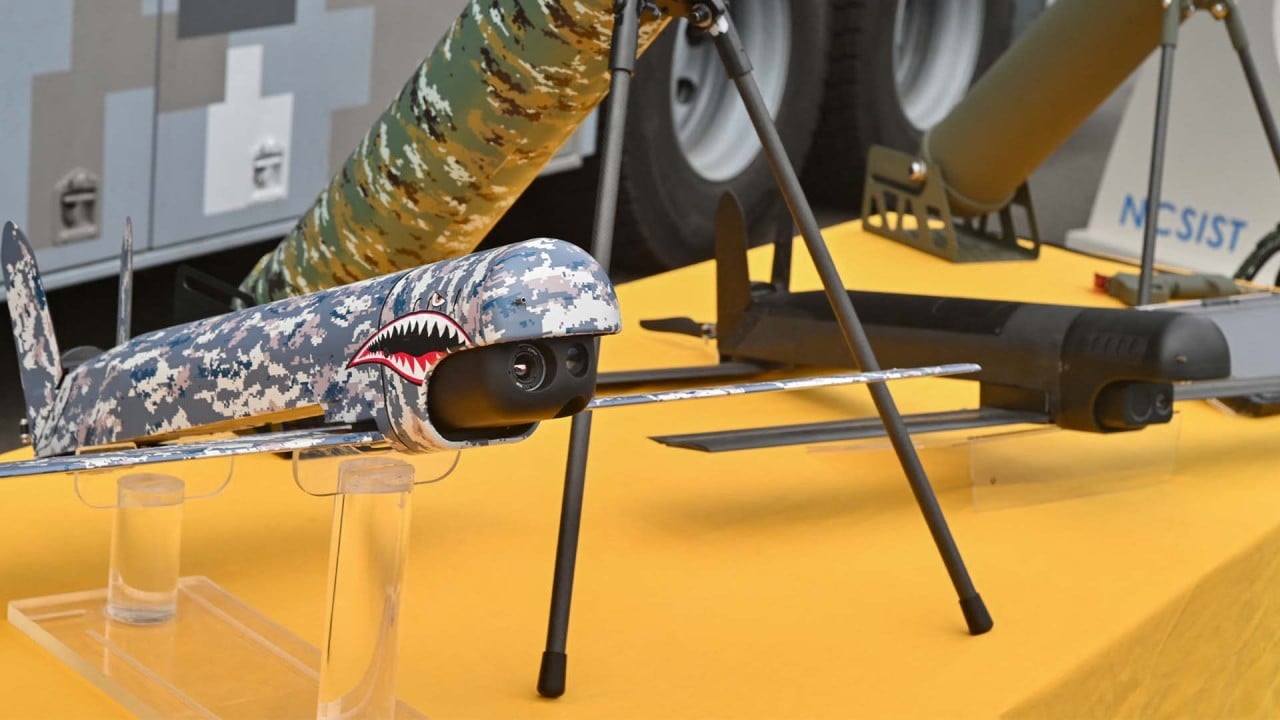From the sky to the sea: how China and US are racing to win the game of drones
In May, the Paris-based Naval News reported that a “mystery ship” spotted in satellite imagery of a dockyard near Shanghai appeared to be designed specifically to host fixed-wing UAVs. If correct, this could be the world’s first drone-dedicated naval carrier.
More details are known about the Type 076, an amphibious assault carrier which is under construction at the Shanghai-based Hudong-Zhonghua shipyard, and appears to be another global first – a combined platform for drones and helicopters.
Last month, Naval News reported that new satellite images showed that the Type 076 is likely to be equipped with an electromagnetic catapult launcher, in line with China’s third and most advanced aircraft carrier the Fujian.
Pictures of the vessel uploaded to social media by enthusiasts in recent months have also featured helicopter and drone mock-ups, suggesting that the Type 076 is destined to carry a combined fleet of fixed-wing drones and helicopters, the article said.
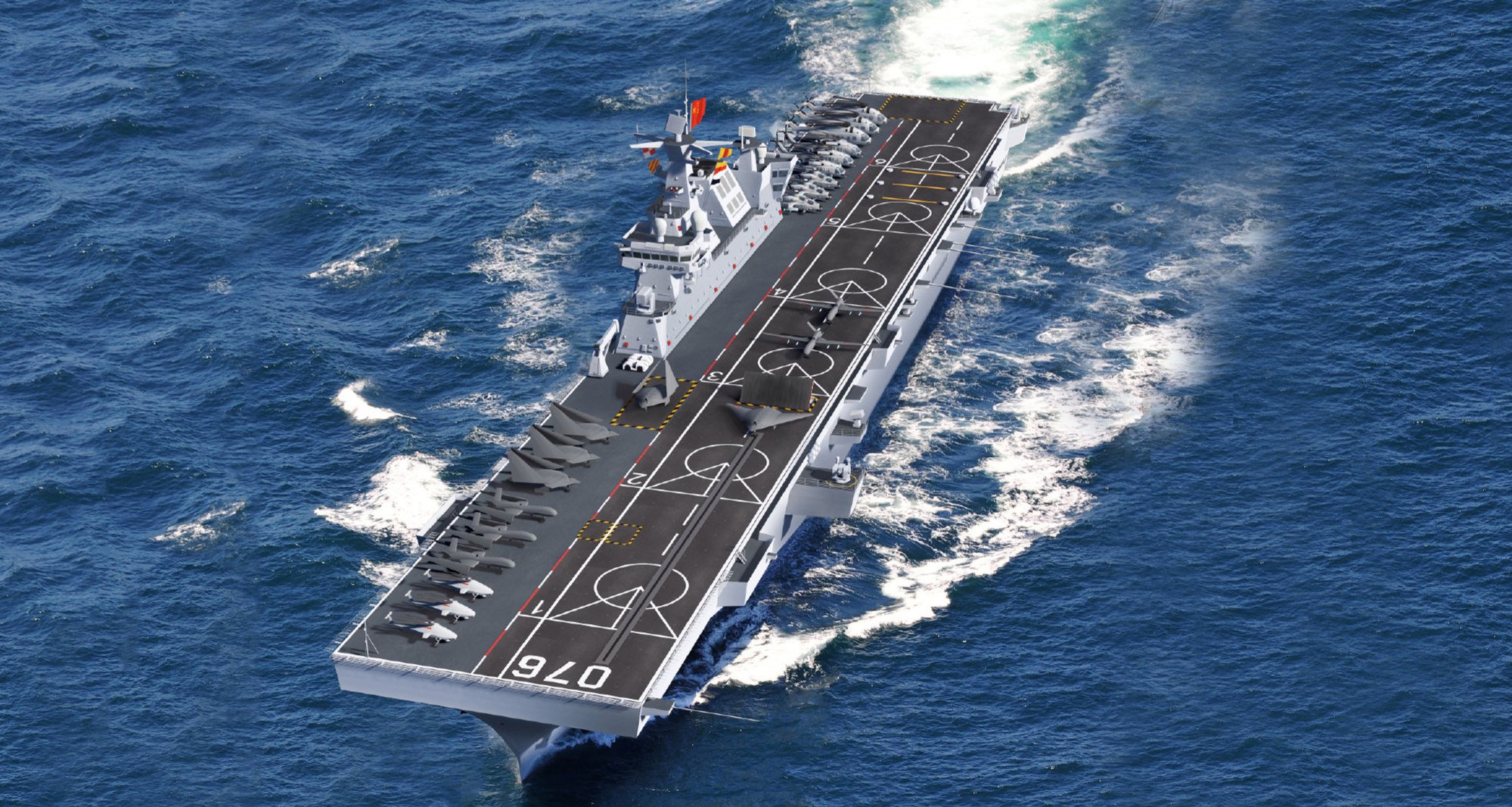
Malcolm Davis, a senior analyst at the Australian Strategic Policy Institute, said that while large deck carriers like the Fujian focused on air superiority, the Type 076 could focus on drone operations.
The construction of the Type 076 shows that China “clearly recognises the importance of autonomous systems in supporting combined arms operations”, Davis said.
“Drones, if produced in high numbers and at low unit cost, allow the PLA to exploit ‘mass’ in combat operations … [and] add a new flexibility to sea-based carrier operations.”
Most countries, including the US, do not recognise Taiwan. However, Washington is opposed to any unilateral change to the status quo and is also the island’s main supplier of arms.
While the US is committed to the island’s defence, Washington has traditionally maintained a policy of “strategic ambiguity” over whether it would come to Taiwan’s military help in the event of an attack from the mainland.
Harry Boneham, a senior analyst at global military intelligence company Janes, said the design of the Type 076 could dilute Taipei’s defence capacity in the event of a conflict, by launching larger drones from a wider range of locations.
“It is possible that … this would drive Taiwan to spread its air defence assets to counter a threat which can be launched from any direction, rather than concentrate them solely on the mainland-facing western side of the island,” he said.
On Thursday, an article in the Chinese military’s official newspaper PLA Daily said that unmanned systems are becoming “the main battlefield” between modern forces – with a focus on the platform’s autonomy, detection and strike capabilities.
The authors, from a People’s Liberation Army war research institute, outlined a military strategy that features distinct roles for drones of varying sophistication and size.
Large platforms will reduce manpower in the forces of the future, mid-sized platforms will transition between coordinating manned-unmanned systems to fully unmanned operations, while swarms of small drones will become an “indispensable” weapon, they said.
Another group of analysts from the PLA’s Academy of Military Sciences recently laid out the lessons China has learned from the world’s “first full-scale drone war” in Ukraine, which “initially revealed the outline of future war forms”, they wrote.
In an article for the Central Party School’s weekly newspaper Study Times, the analysts said the war had shown a “rapid proliferation of lower-cost precision strike capabilities” and “new scale advantages that may emerge at disproportionately lower costs and in unforeseen ways”.
They also stressed the importance of forward-looking, independent innovation in arms development so that China can “get rid of weapons, equipment development control imposed by others”.
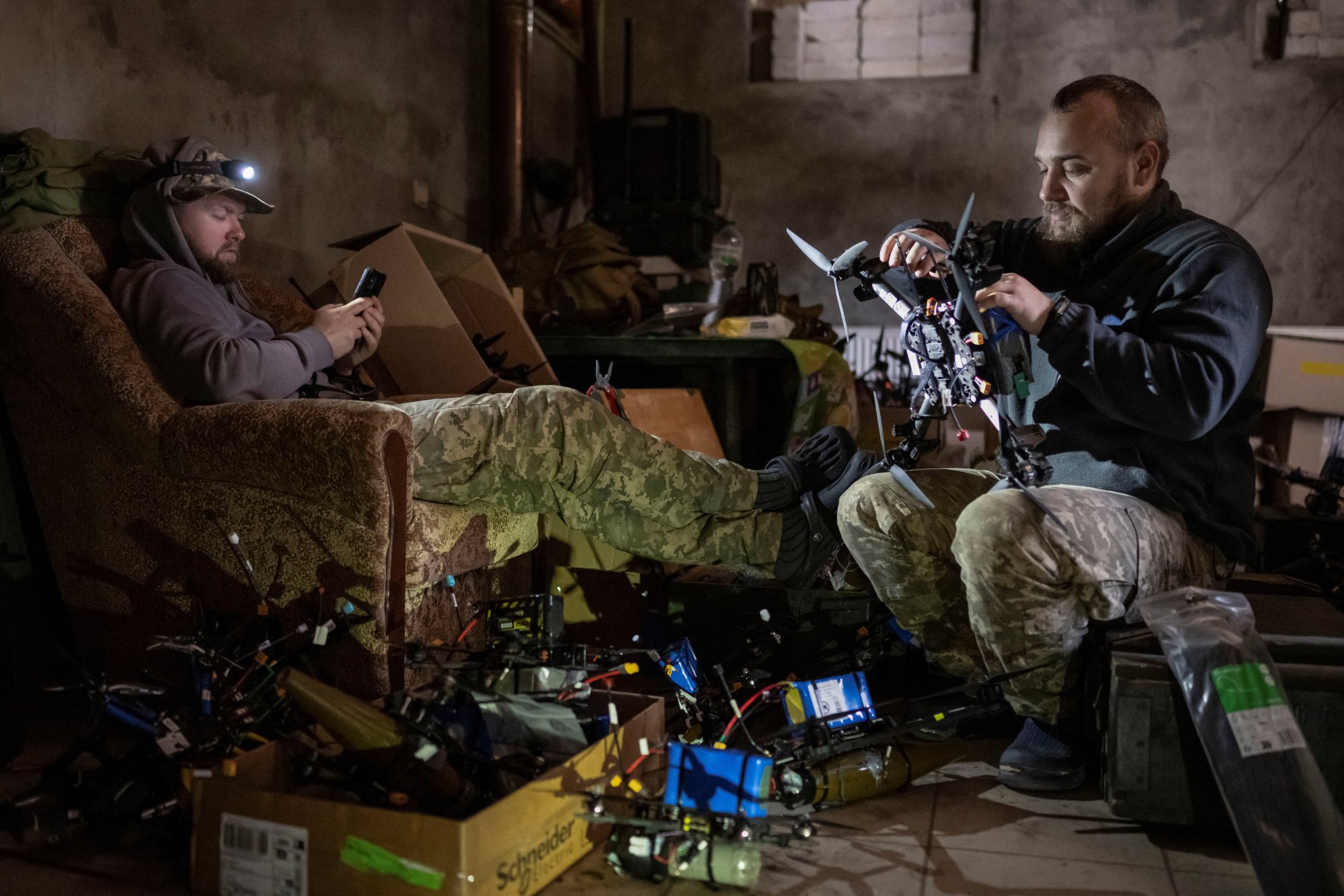
Military commentator and former PLA instructor Song Zhongping said Ukraine’s swarm tactics – which aim to saturate Russia’s air defences and limit its strike and interception abilities – were an “important lesson” for China.
Song noted that China’s drone strategy stresses comprehensive applications of the technology in all of its military branches. Besides UAVs, unmanned marine surface drones and underwater devices are also going to have “transformative changes”, he said.
While Chinese naval analysts have focused on the use of small, cheap, single-function expendable drones operating in swarms of bee or fishlike formations, the US would need to rely on more capable, longer range devices, according to a US think tank.
A report released in June by the Centre for a New American Security said the US would find it “difficult to usefully employ smaller drones” as the larger air or sea vehicles required to transport them could be attacked by PLA forces.
Nevertheless, the head of US Indo-Pacific Command Admiral Samuel Paparo last month introduced the concept of unleashing a “hellscape” of unmanned systems in the Taiwan Strait to counter any PLA operation against the island.
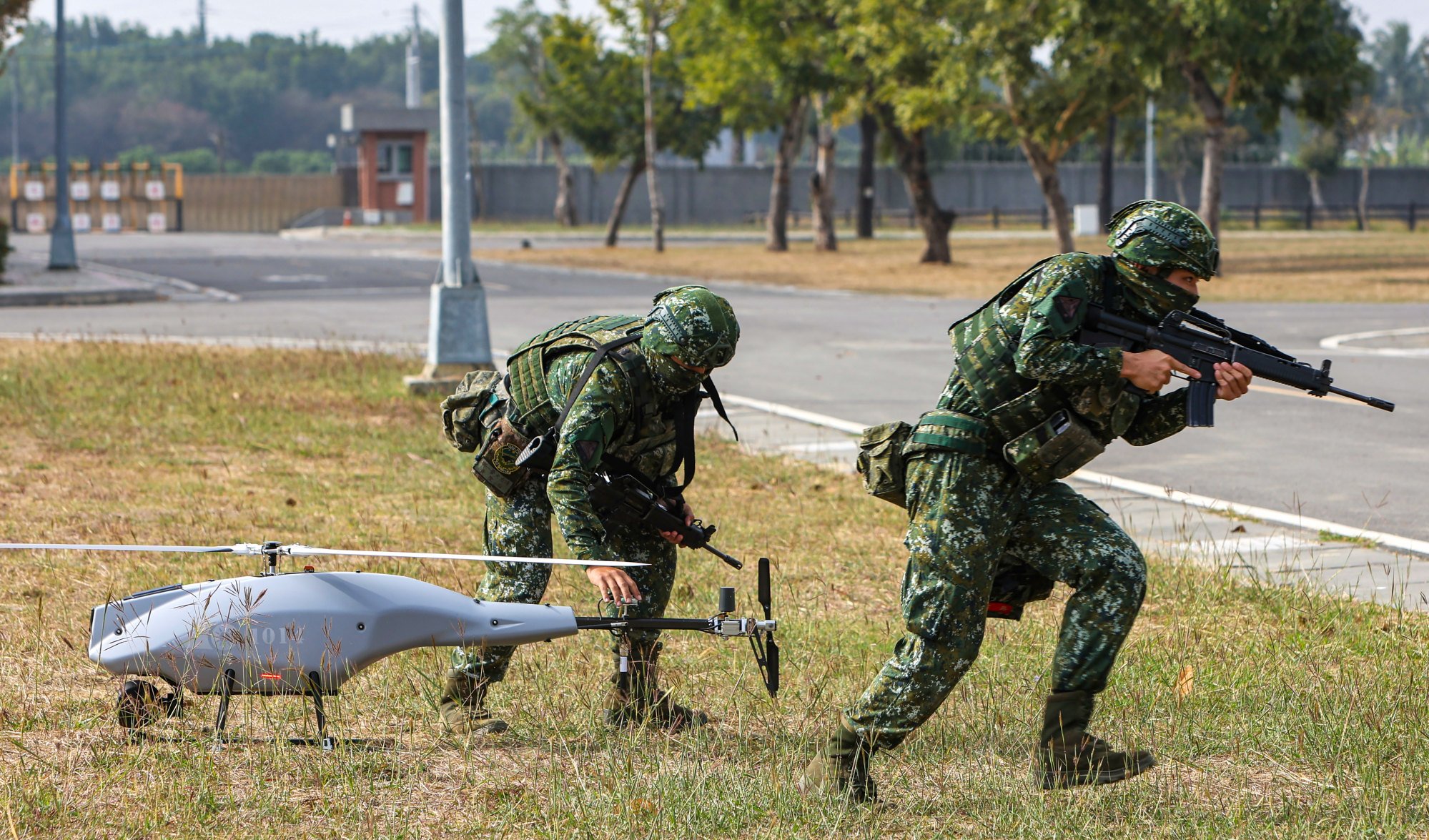
According to Paparo, the US plan is to launch thousands of unmanned systems – from surface vessels and submarines to aerial drones – against PLA forces as soon as they begin to cross the strait, buying time for the US and its allies to respond.
But for Singapore-based defence analyst Collin Koh, while the Paparo plan is a “denial strategy”, both Beijing and Washington will also need to employ “control strategies” in any future conflict.
“Denial means you deny a domain to the enemy, but you may not be able to use it. But control means you deny, and you can use a domain yourself,” said Koh, a senior fellow at the S. Rajaratnam School of International Studies.
“So in that sense, we’re looking at how best you can ensure your drones can be fielded in large numbers at the same time with the requisite reach and sustainability out in the field,” he added.
Lyle Goldstein, director of the China Initiative at Brown University in the US, said Beijing has “a huge geographical advantage” that plays into every aspect of a hypothetical war in the region.
“I do believe it would affect drones – that is, China could employ probably 100 times or more drones into the battle,” he said.
“They can have a very complex deployment scheme that they’re not dependent on any single kind of logistic stream or basing area, [so] they can really spread their forces out and employ them from different factors … in huge numbers.”
As the world’s largest drone manufacturer, China would also be able to produce “huge quantities of high-quality drones” and have “an innovation advantage on AI, an ability to move innovative weapons forward more quickly”, Goldstein said.
For Koh, the cost equation will be a “prevalent issue” in both countries’ future drone strategies.
“Clearly the Chinese will keep harping on their cost advantages. They are able to field things at cheaper costs – whether they’re effective or not is another question – but at least in theory, [they can] field equipment much [more rapidly] at a lower cost,” he said.
“For the US, they are clearly behind that cost curve. So that is going to factor in quite prominently in any future conflict.”
China has been rapidly developing unmanned military platforms since the 2000s but doubled down on the technology as its significance became apparent in the unfolding war in Ukraine.
The AI factor
That has included the addition of autonomous features to its unmanned combat forces using artificial intelligence, a path flagged by Chinese President Xi Jinping in his report to the 20th party congress in 2022.
In the report, a five-year directional policy document, Xi said the development of “unmanned, intelligent combat capabilities” would be accelerated and the proportion of the PLA’s “new-domain forces” increased.
Chinese analysts argue that intelligent drones that do not rely on remote human control could respond more quickly and carry out risky infiltration operations and surprise attacks.
They are pushing for better power systems and data communication networks, as well as planning and control systems that would be able to run clusters of drones using AI capabilities.
Micro drones
A PLA Daily article last year touted the “emerging ability” of small and micro drones to spread “deep into enemy territory” through airdrops or artillery fire where they could “autonomously approach the intended target or directly attack it”.
Autonomous systems could also enhance coordination with crewed systems in swarm operations, automatically adapting to changes in plans and maintaining manoeuvre and combat formations, the article said.
The intelligent drones could also be deployed in regular manned-unmanned coordinated operations to “grasp the battlefield situation and expand early warning detection range” and “accurately direct and guide firepower”, it added.
Stealth manoeuvres
China is also testing new concept designs for its next-generation stealth fighters which incorporate drones.
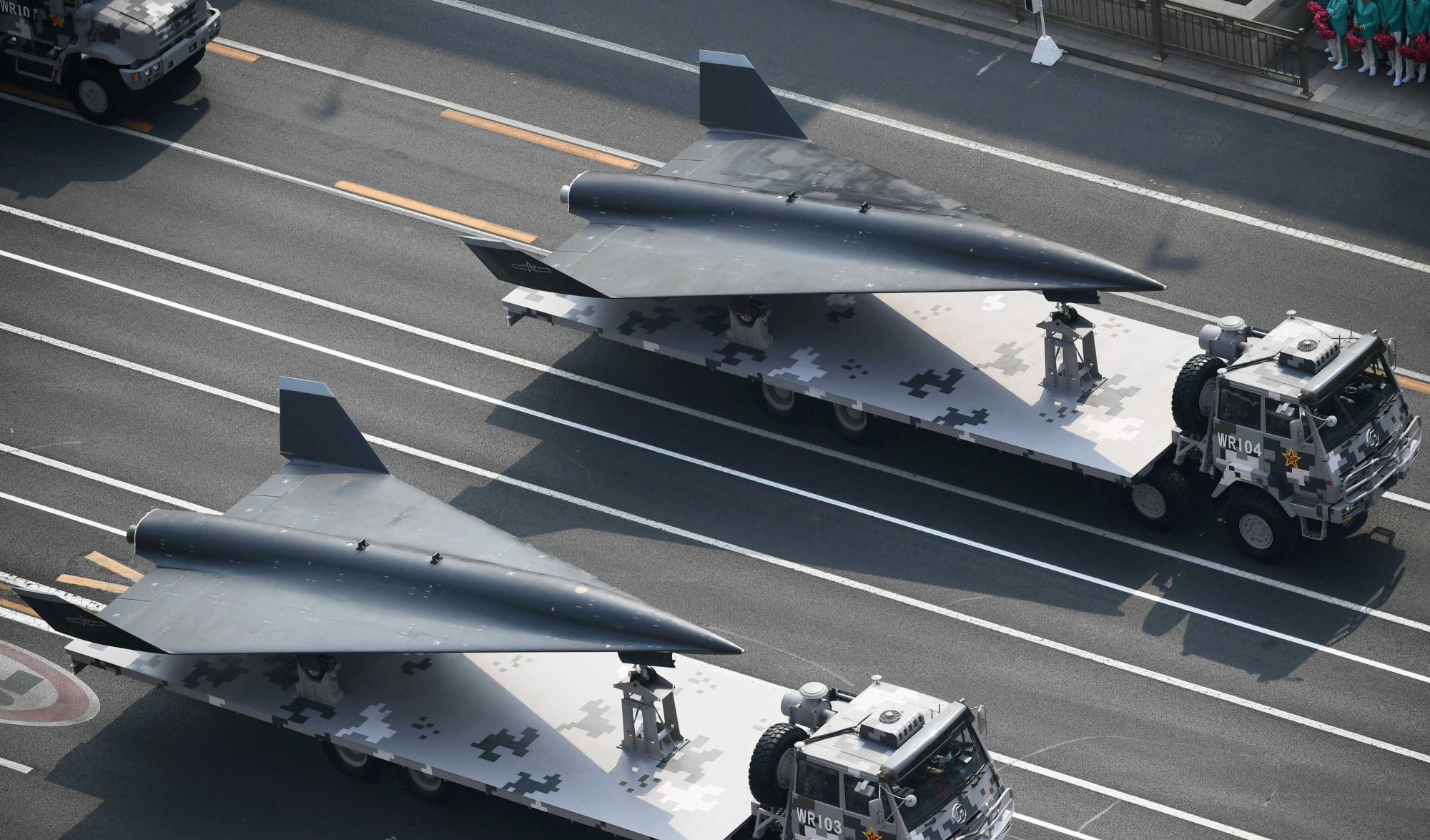
At the upper end of the scale, China’s FL-2 stealth transport drone – developed by Zhongtian Yinkong Technology – combines flying wing and conventional wing designs, as revealed when the vehicle was unveiled on state television in May.
According to Chinese military magazine Ordnance Industry Science Technology, the FL-2 has a maximum take-off weight of 22,000kg (48,500lbs) and can carry precision-guided weapons and surveillance equipment, as well as large numbers of swarming drones.
The FL-2 is also capable of coordinating with conventional aircraft to act as a wingman during combat and conducting “autonomous attack missions” based on preset strategies in the system, it said.
Drones at sea
Timothy Heath, a senior international defence researcher at the Rand Corporation think tank, noted that the Z-6B “is a multi-role platform capable of surveillance, targeting support, and anti-submarine warfare, among other missions”.
There have also been breakthroughs in extra-large unmanned submersible vehicles, according to a Naval News report on satellite imagery of the Sanya naval base in the southern island province of Hainan.
Naval News said the satellite images showed that China has built at least two of the greater-sized underwater drones, in different sizes and designs.
China has made no announcements so far about extra-large unmanned underwater vehicle programmes, which are likely to have longer ranges than their mid-sized counterparts and could be more suitable for transport and offensive roles.
‘Beautiful compromise’
While China is essentially working on drones in “all areas”, it is marine unmanned surface vessels (USVs) that could be the “beautiful compromise for a Taiwan scenario”, according to Goldstein, the US strategist.
“They have a longer range and greater speed than underwater vessels,” he said, adding that China will have learned from Ukraine’s drone and counter-drone strategies in the Black Sea, where cheap, small USVs were used to attack naval facilities and warships.
But he added that China had already been “very interested” in the potential uses for USVs as long as five years ago and has probably achieved a lead over the US and Taiwanese forces.
In February, China unveiled its next-generation Thunderer A2000 combat USV that can reach a top speed of 35 knots and features an 8-cell vertical launching system that can accommodate short and medium-range surface-to-air missiles.
According to a Science and Technology Daily report at the time, the range of equipment is intended to form an observation network for marine monitoring programmes, including disaster prevention and mitigation.
While Chinese sources have insisted that the research vessel is for civilian purposes, its arrival at a dock in the Dalian naval base used to service PLA Navy vessels has raised concerns that it may become a military intelligence tool.
Strength of experience
Despite China’s apparent advantages in the race to develop drone warfare capabilities, Goldstein pointed out that US strength lies in its operational experience with the technology, dating back to the war in Vietnam.
“The United States is sort of the pioneer of this warfare. We have used it successfully and, to some extent, in Iraq and Afghanistan drones were a huge element. So that’s a real advantage for the United States,” he said.
“It’s one thing to talk about drones and build drones. It’s another to employ them in combat.”
Despite China’s dominance in commercial drone production, the US also has an advantage in building military drones, according to Raymond Kuo, director of the Rand Corporation’s Taiwan Initiative.
“The latter require more sophisticated technology and protection against jamming and electronic interference. But of course, sheer mass has a power of its own, depending on the mission,” he said.
“Forward deployed, counter-drone capabilities will be essential to neutralising China’s numerical advantage and allowing US and Taiwanese forces to focus on the main thrust of a PLA attack in the case of an invasion.”
Peacetime role
Observers also expect drones to be increasingly used during peacetime. Heath, from the Rand Corporation, said that Beijing could use drones “to test Taiwan’s resolve and carry out surveillance and reconnaissance”.
“Taiwan might be able to use drones to help respond to PLA aircraft incursions across the centre line as a way to reduce maintenance costs on manned aircraft. Exercises and training on both sides is likely to include more drones both on the water and in the air,” he said.
But Koh, the Singapore-based defence analyst, foresees potential “additional complications” when the PLA’s Type 076 drone carrier begins operations.
He predicts that the vessel is likely to “take all the peacetime role of conducting or supporting drone operations around Taiwan”. The more sustained level of drone operations will create air defence complications for the island, he said.
